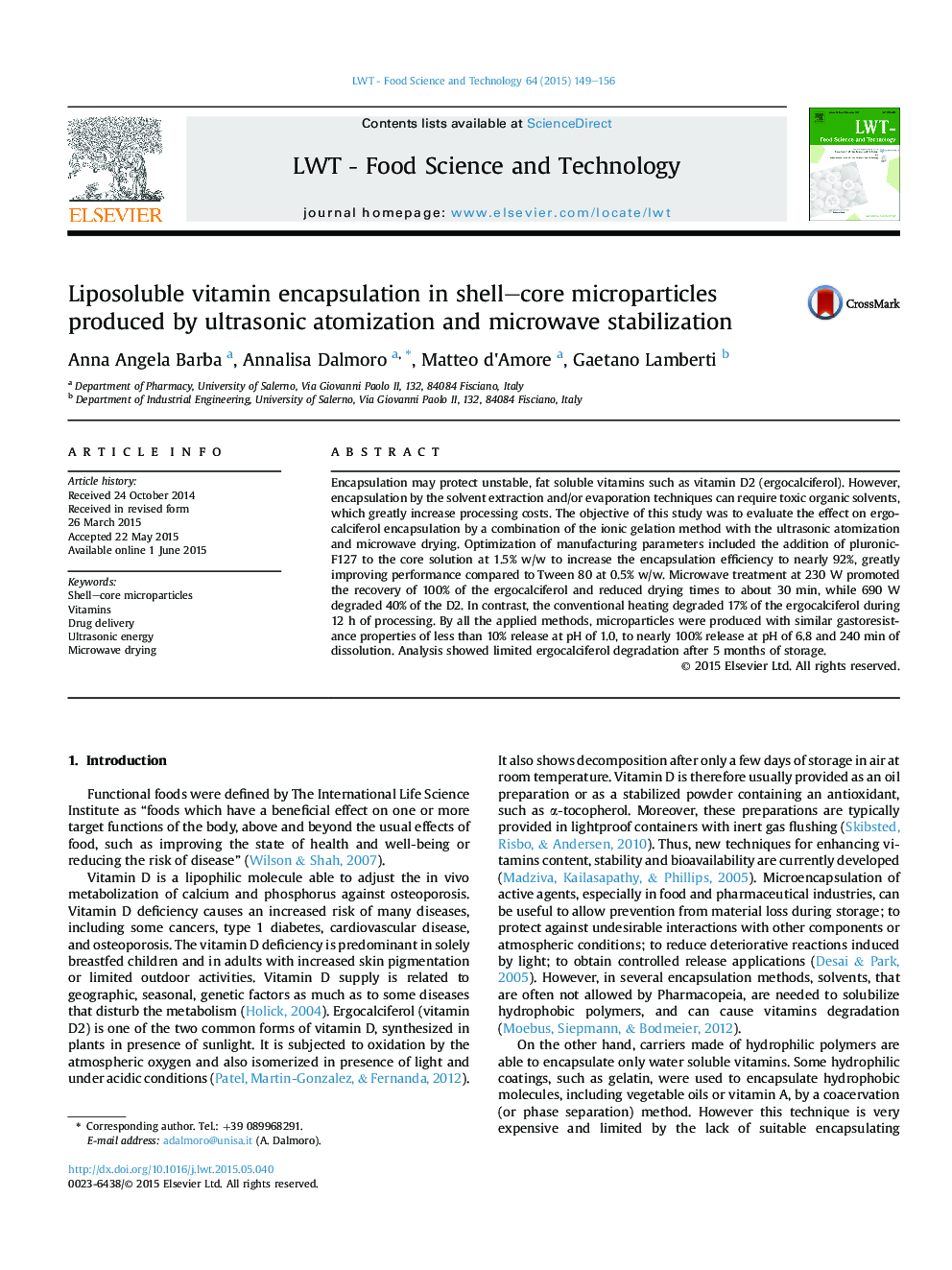| Article ID | Journal | Published Year | Pages | File Type |
|---|---|---|---|---|
| 6400727 | LWT - Food Science and Technology | 2015 | 8 Pages |
â¢An ultrasonic atomization/microwave drying combined technique was improved.â¢Shell-core alginate/pluronic microparticles were able to encapsulate vitamin D2.â¢The particles had enteric behavior: interesting feature for oral administration.â¢D2 degradation in microparticles was avoided for several months of storage.
Encapsulation may protect unstable, fat soluble vitamins such as vitamin D2 (ergocalciferol). However, encapsulation by the solvent extraction and/or evaporation techniques can require toxic organic solvents, which greatly increase processing costs. The objective of this study was to evaluate the effect on ergocalciferol encapsulation by a combination of the ionic gelation method with the ultrasonic atomization and microwave drying. Optimization of manufacturing parameters included the addition of pluronic-F127 to the core solution at 1.5%Â w/w to increase the encapsulation efficiency to nearly 92%, greatly improving performance compared to Tween 80 at 0.5%Â w/w. Microwave treatment at 230Â W promoted the recovery of 100% of the ergocalciferol and reduced drying times to about 30Â min, while 690Â W degraded 40% of the D2. In contrast, the conventional heating degraded 17% of the ergocalciferol during 12Â h of processing. By all the applied methods, microparticles were produced with similar gastoresistance properties of less than 10% release at pH of 1.0, to nearly 100% release at pH of 6.8 and 240Â min of dissolution. Analysis showed limited ergocalciferol degradation after 5 months of storage.
